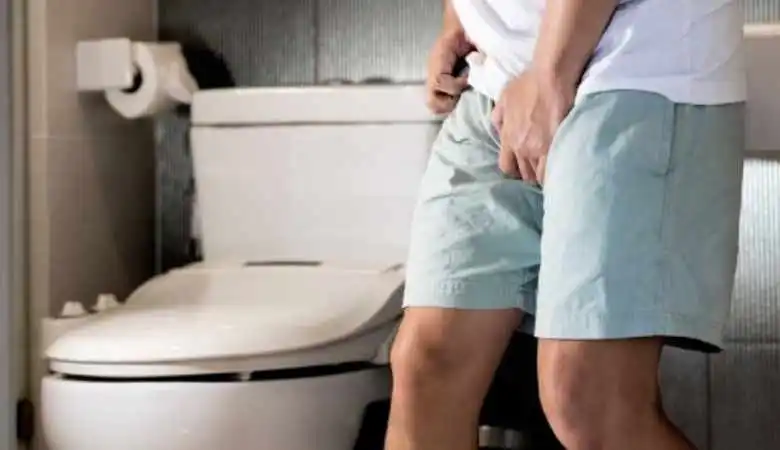You noticed that one of your testicles was larger or lower than the other. Should we be worried? When to consult? A urologist takes stock of the factors of height and weight asymmetry and the signs to watch for your testicular health.
Before imagining the worst, know that testicular asymmetry can be physiological. As with women, it is possible to have one breast that is a little larger or a little droopier than the other. However, you should consult if you have noticed that this change has appeared suddenly and if other symptoms are present.
Normal testicles: what size? What weight?
In adults, the testicle is an average of 3.5 cm high and 2 cm wide and weighs approximately 18 grams.
One testicle may be larger or lower than the other. First of all, it is essential to note that the position and volume can change during the same day depending on environmental factors such as temperature (for example, after a hot bath, the testicle can be larger. Conversely, the cold tends to shrink the testicles), stress or even having sexual intercourse.
In addition, certain diseases can cause swelling of a testicle, which can, therefore, give an asymmetrical appearance. Generally speaking, if the swelling appears when it did not exist before and there are associated symptoms such as pain, induration, lump, fever, etc. It is imperative to consult your doctor without further delay.
Please note that the shape or size of a testicle does not influence male fertility.
Why do I have one testicle bigger than the other?
Sometimes, one testicle is “naturally” larger than the other. This congenital asymmetry is most often mild and has no consequences for health. The only drawback remains an aesthetic complex for some people.
Swelling of a testicle can nevertheless be the consequence of an illness. Here are the conditions likely to increase the volume of a testicle:
Orchitis is inflammation of the testicle
Orchitis is an inflammation of a testicle. It is often associated with inflammation of the epididymis: we then speak of orchid-epididymis. Orchitis can affect both adults and children. Orchitis is generally of infectious origin. In young adults (before age 40), it is often the consequence of a sexually transmitted infection ( STI ). Testicular swelling is accompanied by pain, redness, fever, and sometimes urinary problems.
Hydrocele is an accumulation of fluid
Hydrocele is a benign disease caused by fluid accumulation in a “pocket” surrounding the testicle. It is responsible for a more or less significant increase in volume on a stock exchange. Hydrocele can also cause pain and cosmetic damage.
“However, most of the time, the disease is painless and does not require treatment. The diagnosis is confirmed using an ultrasound. A surgical intervention can be proposed to overcome the hydrocele if the patient is bothered,” according to Doctor Antoine Faix, the urologist.
Epididymis cyst, an accumulation of fluid
Cyst of the epididymis (epididymal cyst) or spermatic cord is a common cause of testicular swelling. The main symptom is a feeling of having a “ball of fat ” in the testicle. More rarely, it may be a dermoid cyst whose most suggestive symptom is the increase in the volume of the bursa. Cysts usually do not cause pain. A scrotal ultrasound can confirm the diagnosis.
Hard mass: How do you know if it’s cancer? When to worry?
The symptom suggestive of testicular cancer is an increase in the volume of a testicle associated with the induration of this area. You may be recommended to palpate your testicle regularly to ensure these signs are not present. Vigilance must be required in young men who are at greater risk of testicular cancer.
The diagnosis is confirmed using an ultrasound as well as a test of biological markers of testicular cancer.
Why do I have one testicle lower than the other?
It also happens that one testicle is naturally lower than the other. This asymmetry can be congenital and has no health consequences.
It is not uncommon for this anomaly to be caused by a larger volume of one of the two testicles. Therefore, it begins to fall lower by the simple effect of gravity.
Let us add that particular testicles are said to be hypermobile or retractile. Reflexively, the testicles retract in response to touch, temperature, fear, or laughter. Such a response is typical, especially in infants and children. Hypermobile testicles are not associated with an increased risk of cancer or other complications.
Finally, in the event of testicular torsion, the testicle may be very small (especially in babies) or retracted. It occurs when the spermatic cord twists, causing the blood supply to the testicle to stop. Testicular torsion is an emergency and requires prompt treatment.
How do you feel your testicles?
It is necessary to regularly check your testicles to verify that you do not have any health problems there. The ideal time for self-examination is after a shower (when the warmth of the water relaxes your scrotum). Hold your scrotum in the palm of your hand and use your fingers and thumb to examine each testicle.
You will need to search for:
- Lumps or swelling
- The impression of a ball
- Induration
- New changes
- The feeling of heavy testicles
- The presence of liquid in the purses
If you notice any of these signs, consult your doctor promptly to rule out any risk of illness.
Also Read: Simple Steps to Follow When You Want to Lose Weight?


